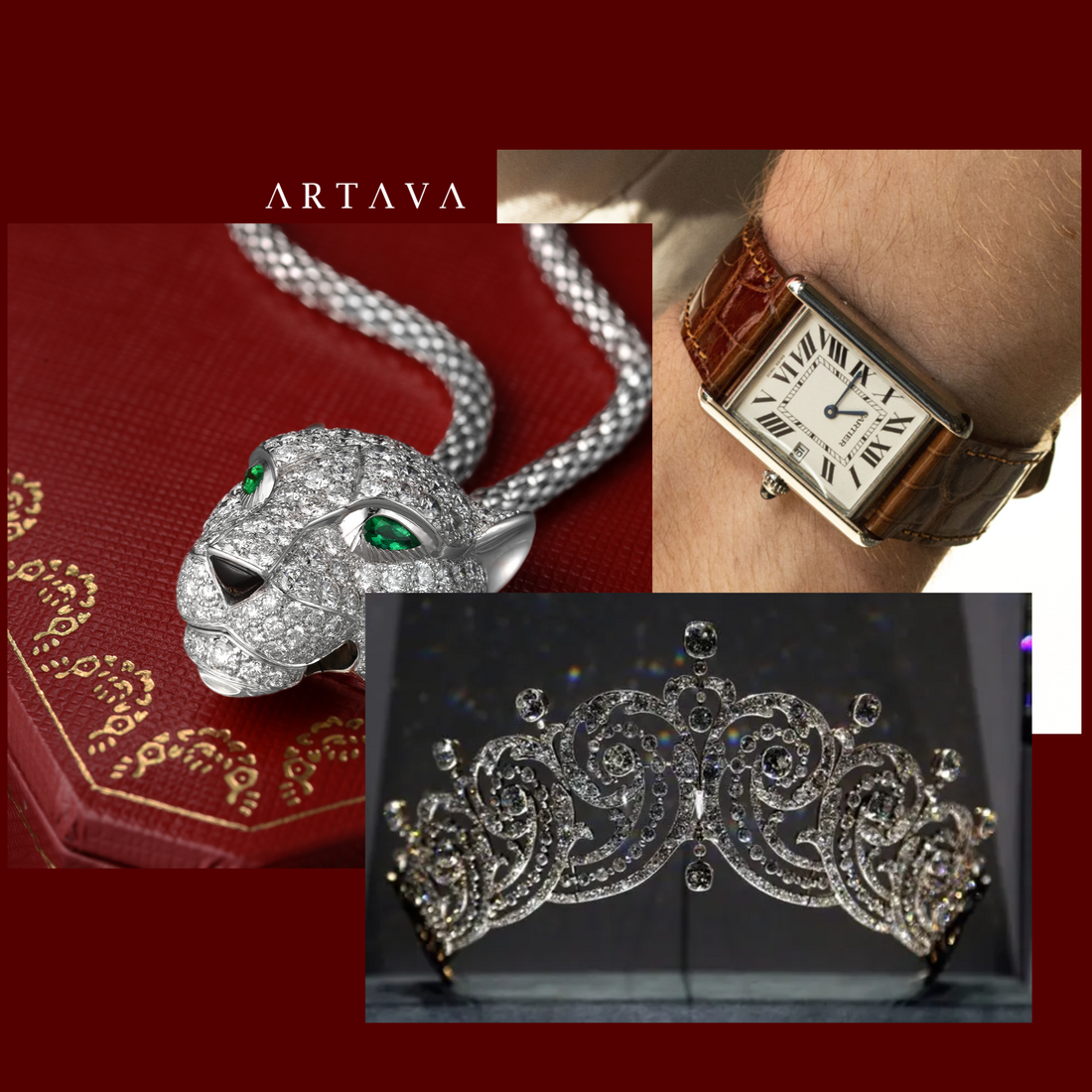
The Legacy of Cartier: From Royalty to Modern Luxury
Share
Cartier, often referred to as "The Jeweller of Kings and the King of Jewellers," is a name synonymous with elegance, sophistication, and timeless luxury. For over 170 years, Cartier has not only adorned royalty but also set the standard for modern luxury, blending tradition with innovation. In this article, we’ll explore Cartier’s historical significance, its iconic jewellery and watch collections, and its enduring influence on the world of luxury.
A Royal Beginning: The Historical Significance of Cartier
Cartier was founded in 1847 by Louis-François Cartier in Paris, quickly gaining a reputation for exquisite craftsmanship and luxurious designs. The brand’s connection with royalty began in the early 20th century when King Edward VII of England famously referred to Cartier as "the jeweller of kings and the king of jewellers." In 1904, King Edward VII commissioned Cartier to create 27 tiaras for his coronation, solidifying the brand’s status among Europe’s elite.
Over the years, Cartier has been patronised by royal families across the globe, from the Maharajas of India to the royal houses of Europe. This regal association not only elevated Cartier’s profile but also established its reputation as the epitome of luxury.
Iconic Collections: Jewellery and Watches that Define Cartier
Jewellery:
Cartier’s jewellery collections are nothing short of legendary. The brand’s designs have become iconic symbols of luxury, with some of the most famous pieces in history bearing the Cartier name.
-
The Cartier Love Bracelet: Introduced in 1969, the Love Bracelet is perhaps one of Cartier’s most recognisable pieces. Designed as a symbol of eternal love, the bracelet is secured to the wrist with a special screwdriver, emphasising the idea of commitment. Its minimalist design and deep symbolism have made it a favourite among celebrities and fashion icons alike.
-
The Panther Motif: First appearing in 1914, the panther has become an enduring symbol of Cartier. The sleek, feline motif has been used in various forms, from brooches to necklaces, and is a testament to the brand’s innovative design. The panther motif was famously championed by Jeanne Toussaint, Cartier’s creative director in the 1930s, and has since become a symbol of fierce elegance.
-
The Tutti Frutti Collection: Cartier’s Tutti Frutti jewellery, characterised by its vibrant mix of coloured gemstones, is another testament to the brand’s creativity. Inspired by Indian designs, this collection, first popularised in the 1920s, has remained a favourite among collectors and continues to influence jewellery design today.
Watches:
Cartier is also a revered name in the world of horology, known for creating some of the most iconic watch designs.
-
The Cartier Santos: Introduced in 1904, the Santos was one of the first wristwatches ever made. Created for aviator Alberto Santos-Dumont, who needed a timepiece that could be easily read while flying, the Santos combined functionality with elegant design, setting a new standard for wristwatches.
-
The Cartier Tank: Launched in 1917, the Cartier Tank was inspired by the military tanks used during World War I. Its sleek, rectangular design broke away from the traditional round watch faces of the time and has since become a timeless classic. The Tank has been worn by countless celebrities and public figures, further cementing its place in watchmaking history.
Cartier’s Influence on Modern Luxury
Cartier’s influence extends far beyond jewellery and watches. The brand’s commitment to craftsmanship, innovation, and design excellence has set the bar for modern luxury. Cartier’s ability to blend tradition with contemporary trends has kept it at the forefront of the luxury market.
Cultural Impact:
Cartier’s designs have not only graced royalty and celebrities but have also become cultural symbols. The brand’s pieces often feature in films, fashion magazines, and art exhibitions, highlighting its role in shaping the modern aesthetic.
Sustainability and Innovation:
In recent years, Cartier has embraced sustainability, ensuring that its luxury offerings are crafted with responsibly sourced materials. This commitment to ethical practices, combined with its continued innovation in design and technology, ensures that Cartier remains relevant in the ever-evolving luxury landscape.
A Symbol of Timeless Elegance:
What truly sets Cartier apart is its ability to remain timeless. Whether through the enduring appeal of the Love Bracelet or the sleek design of the Tank watch, Cartier has mastered the art of creating pieces that transcend trends and stand the test of time. This ability to blend heritage with modernity has solidified Cartier’s position as a symbol of lasting luxury.
Conclusion: The Enduring Legacy of Cartier
From its royal beginnings to its current status as a global symbol of luxury, Cartier’s legacy is one of unparalleled elegance and innovation. The brand’s iconic jewellery and watch collections continue to influence modern luxury, setting the standard for craftsmanship and design. Whether adorning royalty or gracing the wrists of modern-day icons, Cartier remains a name synonymous with timeless beauty and sophistication.




